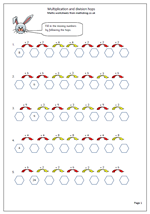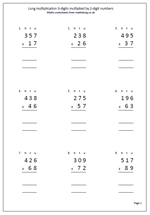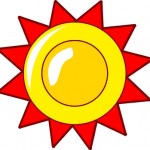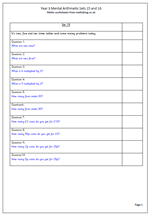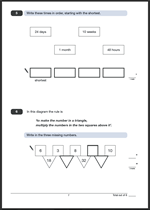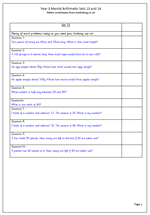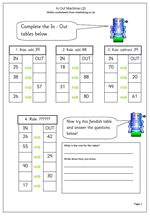Each of the questions on this page has two sets of coloured arrows above the spaces which need to be filled in. The arrows give the instruction, red for multiplication and yellow for division. There are eight hexagons, one of which has been filled in. The aim is to complete the other seven using the arrows to work out what to put inside each hexagon.
Sounds complicated but it is easier to complete than to explain!
This is good practice for
a. knowing tables
b. knowing division facts
c. knowing that multiplication and division are the inverse of each other.
This page can be found in the Year 5 Know Number Facts category.
